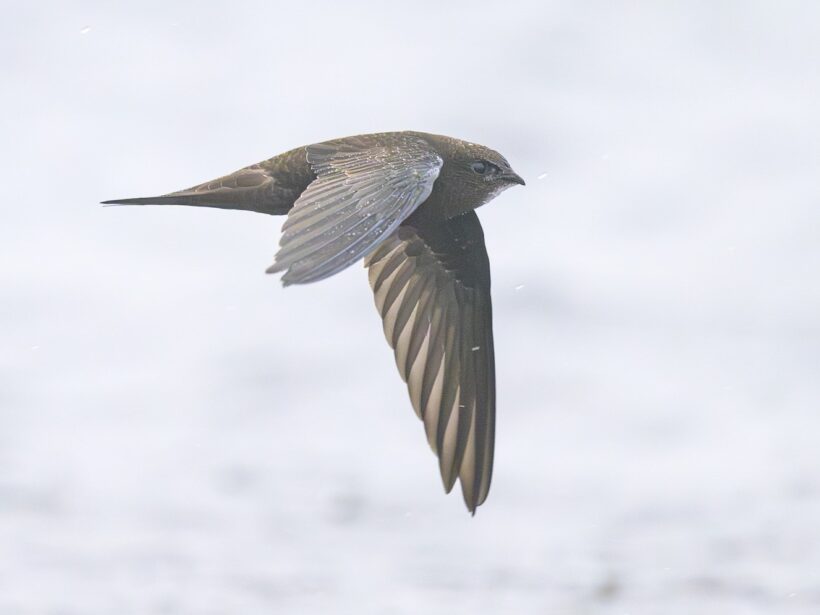Apus apus
Arriving in France around mid-April and largely gone by early August, the Black Swift is one of the migratory birds that spends the least time on its nesting grounds. For this reason, it is called the “100-day bird” in the UK.
An excellent sailor, the swift can reach speeds of 200 km/h and spends its entire life in the air, except when incubating its eggs or feeding its chicks in a hole of a wall. Swifts feed, sleep and mate in flight, so much so that they hold the record for uninterrupted flight, more than 10 months without landing.
All breeding swifts in Western Europe migrate to spend the winter in sub-Saharan Africa. The migration routes are fairly widely distributed across Europe including the Atlantic coast. The migration period is often short, concentrating the passage of very large numbers of individuals in a few days. Swifts can travel up to 500 km a day and migrate at night.
For the Migratlane programme, swifts are captured near their breeding sites using vertical nets to determine their altitudes and estimate their migration routes. They are fitted with a 0.5 g GLS which records the data (approximate geographical position and precise atmospheric pressure for altitude). In order to collect the data, the GLS must be recovered the following year by recapturing the birds when they are back from wintering.

